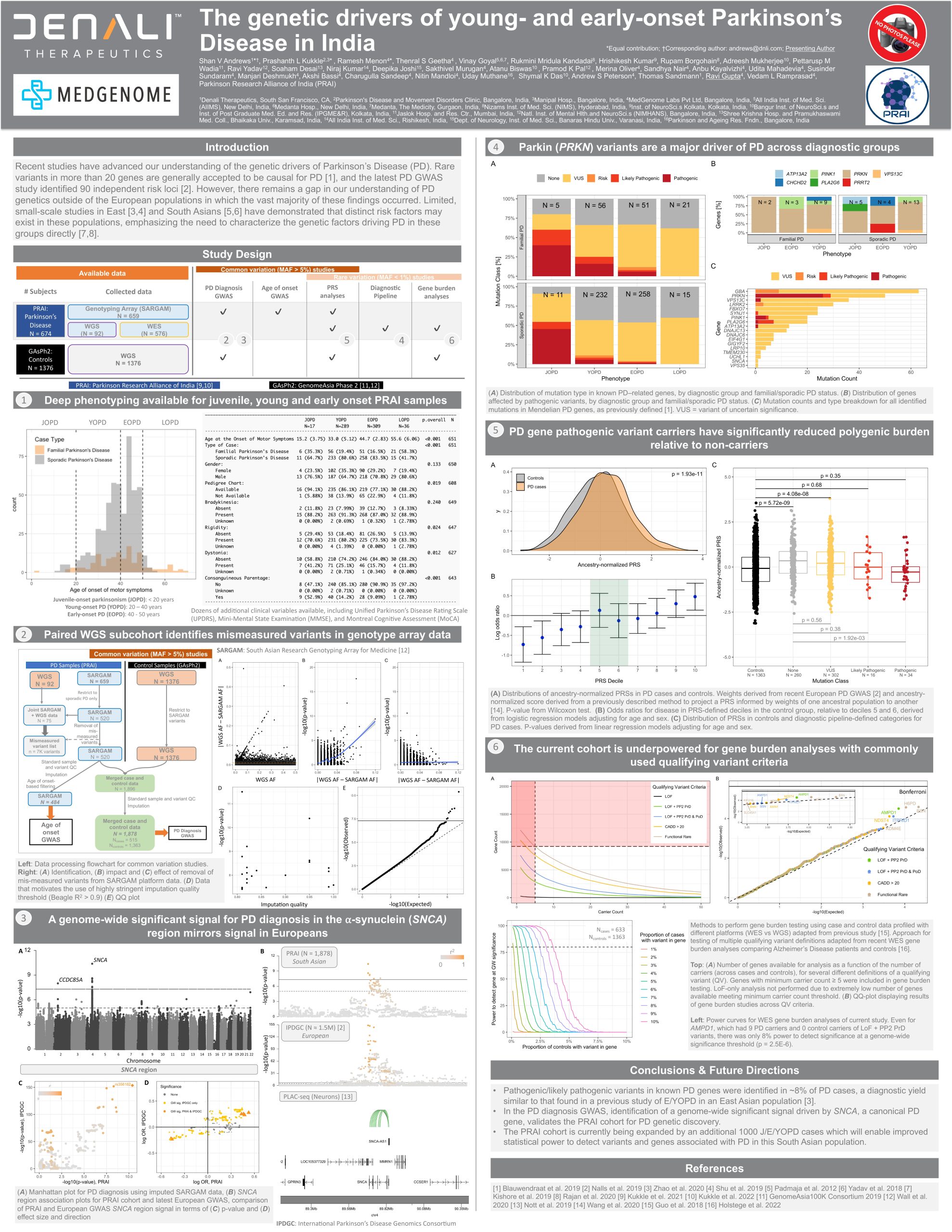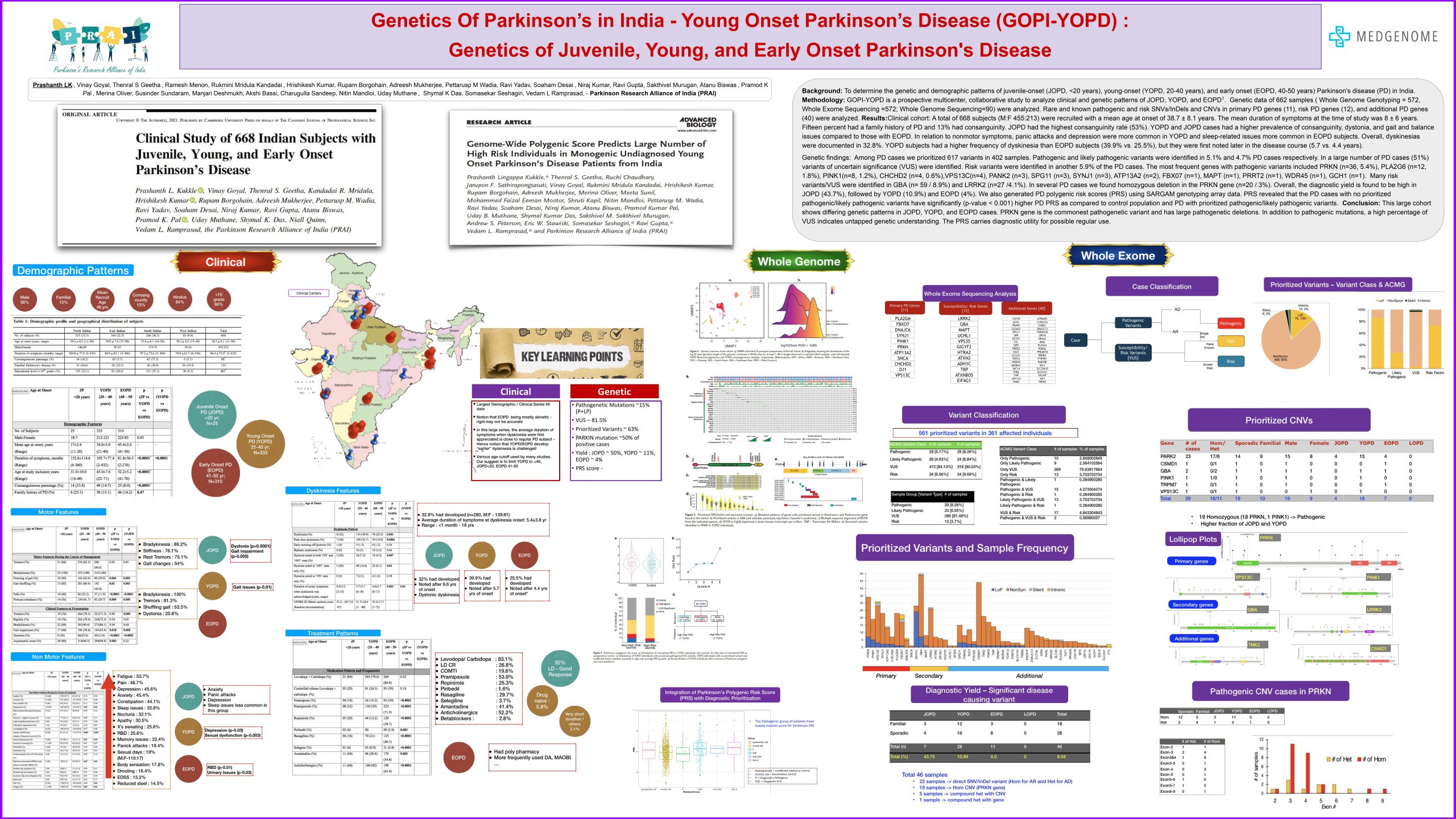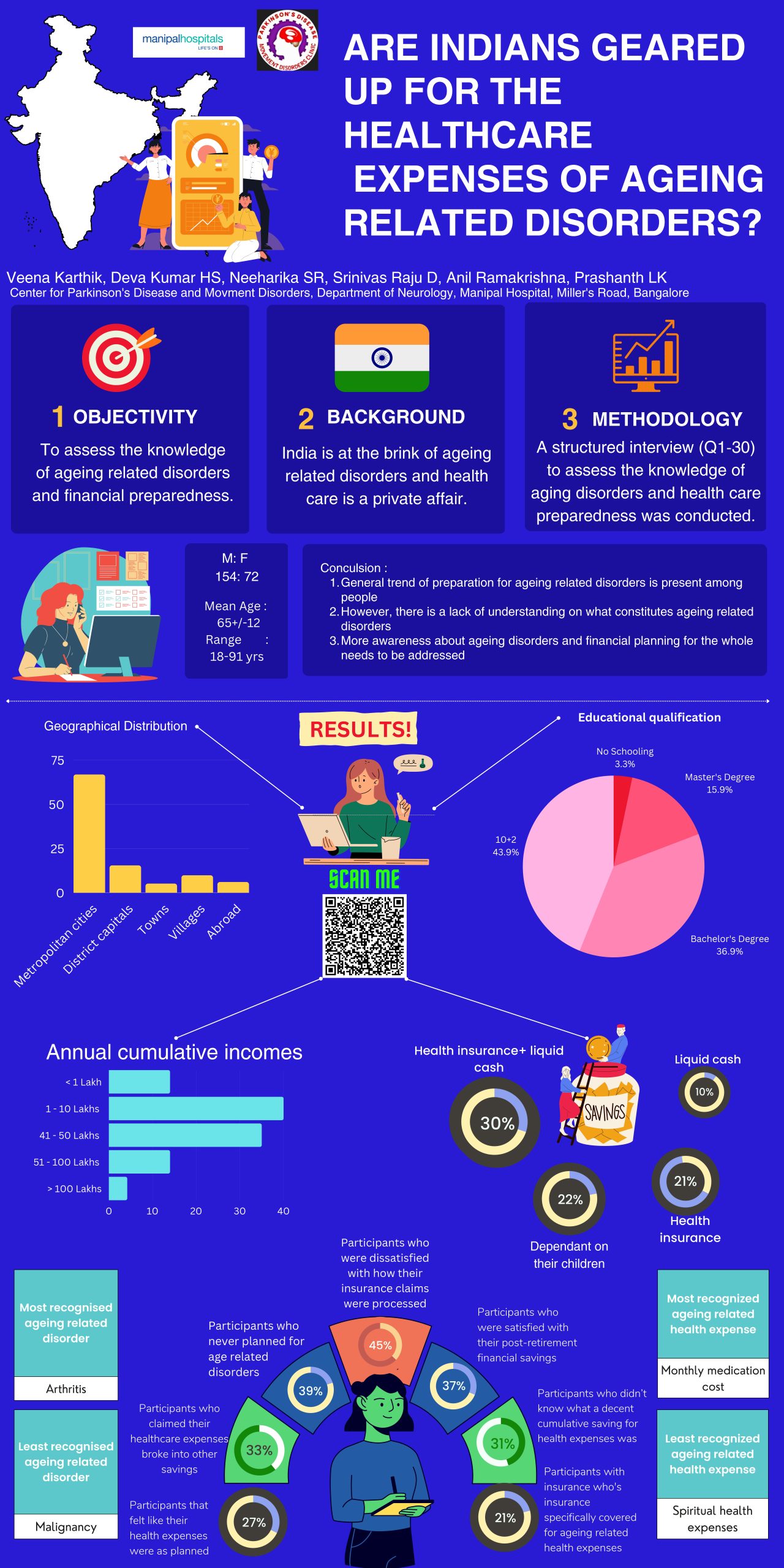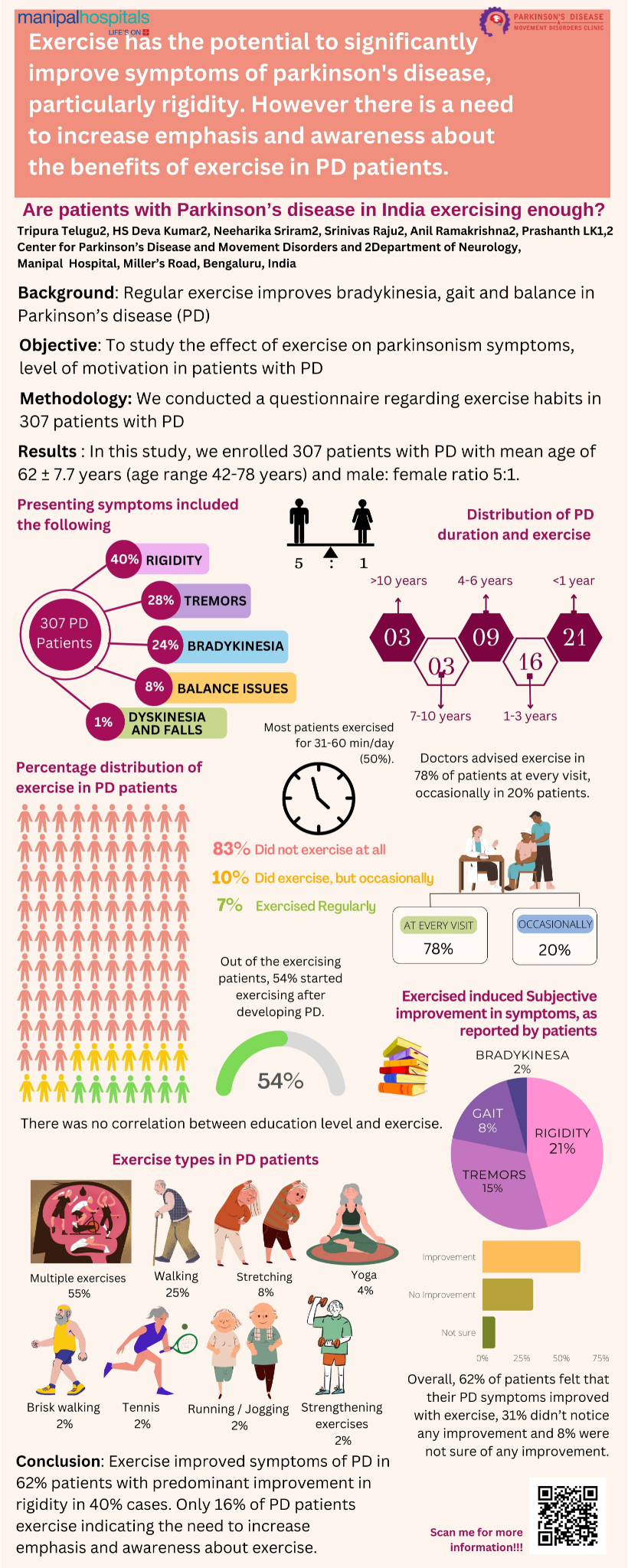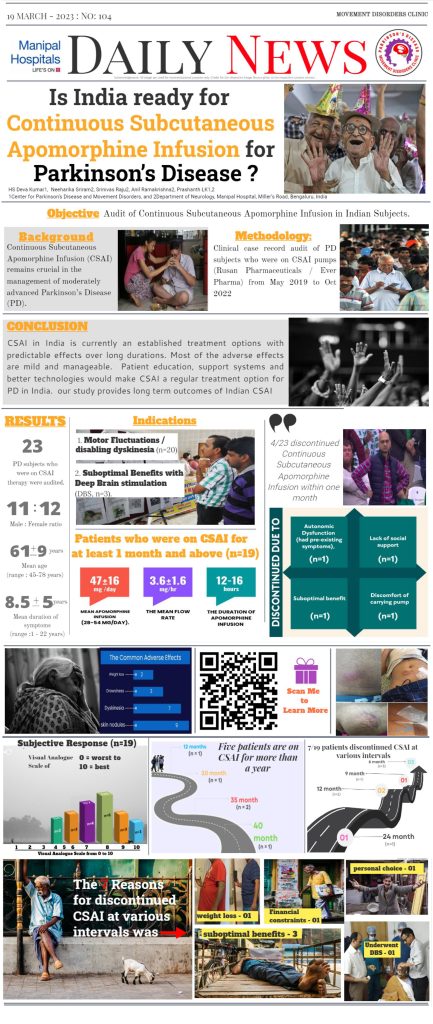Unlocking India’s Genetic Code: Revelations and Challenges in Parkinson’s Disease Research
Charting Unexplored Terrain: The Genetic Landscape of Parkinson’s Disease in India. In a groundbreaking publication titled ‘The Genetic Drivers of Juvenile, Young, and Early-Onset Parkinson’s Disease in India,’ a pioneering Indian research group fills a crucial void in our understanding, shedding light on the elusive genetic factors driving Parkinson’s disease within the Indian population. The article is published in leading Movement Disorders Journal which is well read across globally.
This is a first of a kind study conducted in India aimed to initiate a population-based genetic screening of Young Onset Parkinson’s disease (YOPD) in Indian population. The Genetics of PAN-India Young Onset Parkinson Disease (GOPI-YOPD), a multicentre Pan India project- recruited 1000 patients through a network of 10 specialty Movement Disorder Centers/Neurology clinics across India. The genomic analysis was done at MedGenome Labs.
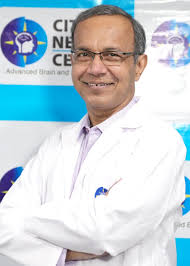
``Parkinson's disease is a common neurological disorder causing tremors, slowness of movements, stiffness and walking difficulties in most. It is caused by a complex interaction between external environmental and familial or genetic factors. This study gives a much needed insights into the Indian genetics to the bigger puzzle of Parkinson's Disease``Prof. Rupam Borgohain
Secretary, Parkinson's Research Alliance of India (PRAI)

“MedGenome has always been at the forefront of equipping clinicians and patients with the latest and most innovative tools in healthcare by leveraging the power of genomics. With the increased focus on personalised medicine, using risk screening tools such as Polygenic Risk Score (PRS) will enable us to predict an individual's genetic liability to rare and inherited diseases much in advance before the symptoms start appearing. With these findings, we aim to offer a prognostic value to clinicians while catering to the need of a systematic genetic evaluations for timely prevention and management of several diseases.Dr Ramprasad VL
CEO & Chief Scientist, Medgenome Labs Private Limited

``a first of its kind- India wide registry of Young Onset Parkinsons Disease (disease starting at age less than 50 years) was started by PRAI and resulted in insights into clinical and genetic aspects of Indian patients. Parkinson’s disease with onset less than 20 years (juvenile PD), 20-40 years (young onset PD) and 40-50 years (early onset PD) have different clinical features. The role of genetic factors seems to be higher in these patients compared to older age and this collaborative project of PRAI with MedGenome has identified unique genetic fingerprints in Indian patients.”Dr Prashanth LK
Principal Investigator, Genetics of Parkinon in India : Young Onset Parkinsons Disease (GOPI-YOPD)

Critical Findings in the article:
The study focused on individuals with young-onset Parkinson’s disease (YOPD) and early-onset Parkinson’s disease (EOPD) in India. YOPD was defined as age of onset (AoO) ≤40, while EOPD was defined as 40 < AoO ≤ 50. The study aimed to understand the genetic drivers of PD in these specific age groups. The main findings of the study regarding the genetic drivers of Parkinson’s disease in India are as follows:
- Rare variants in more than 20 genes were identified as causal for Parkinson’s disease.
- The study identified 90 independent risk loci associated with Parkinson’s disease through a genome-wide association study (GWAS).
- The study focused on a South Asian population, filling the gap in understanding Parkinson’s disease genetics outside of European populations.
- The study had a sample size of approximately 2000 patients and controls, limiting the statistical power of the analyses.
- Some of the findings were validated by previous studies in other cohorts or populations, such as the association of the SNCA region with Parkinson’s disease diagnosis.
- The study highlighted the need for replication of the findings in additional South Asian Parkinson’s disease cohorts and in cohorts from other populations.
Parkinson Disease Genes Found in this Study:
In the study conducted in India, several pathogenic forms of genes were associated with Parkinson’s disease. The most common pathogenic variant was observed in the PRKN gene, with homozygous deletions being the predominant form. Other pathogenic mutations were found in genes such as PINK1, CHCHD2, VPS13C, ATP13A2, PLA2G6, and PRRT2. Additionally, likely pathogenic mutations were observed in genes like PLA2G6, MAPT, GCH1, PINK1, SYNJ1, and WDR45. The GBA1 gene mutations were also frequently observed in the cohort. These findings provide insights into the genetic factors contributing to Parkinson’s disease in the Indian population.
New Discoveries :
Several new genes were discovered in this study on the genetic drivers of Parkinson’s disease in India. The study identified rare variants in more than 20 genes that are considered causal for Parkinson’s disease. However, the specific genes that were discovered in this study are not mentioned in the provided context
Take Home Message and Future Directions based on this study:
The study on the genetic drivers of Parkinson’s disease in India identified several key findings and proposed future directions. Here are the conclusions and future directions based on the study:
- Genetic Risk Factors: The study identified both common and rare genetic variants associated with Parkinson’s disease in the South Asian population. It expanded our understanding of the genetic architecture of Parkinson’s disease beyond European populations.
- Polygenic Risk: The study found that individuals with pathogenic variants in known Parkinson’s disease genes had a reduced polygenic burden, suggesting that these variants may have a stronger effect on disease risk.
- Novel Risk Loci: The study identified a potential association between the BSN gene and Parkinson’s disease in the South Asian population. Further research is needed to validate this finding and understand the functional impact of BSN variants.
- Replication and Validation: The study acknowledges the need for replication and validation of the findings in additional South Asian Parkinson’s disease cohorts and in other populations. Larger sample sizes and diverse cohorts will improve the statistical power and generalizability of the results.
- Global Parkinson’s Genetics Program (GP2): The study highlights the importance of initiatives like the GP2, which aims to address the knowledge gap in Parkinson’s disease genetics by including diverse populations and promoting equitable personalized medicine.
- Future Research: The study suggests that with ongoing efforts in the GP2 and other Parkinson’s disease genetics studies in India, our understanding of Parkinson’s disease genetics in South Asians will significantly increase in the coming years.
In summary, the study provides valuable insights into the genetic drivers of Parkinson’s disease in the South Asian population and emphasizes the need for further research, replication, and validation to enhance our understanding of the disease and improve personalized medicine approaches.
Resource Reference
Andrews, S.V., Prashanth L Kukkle, Menon, R., Geetha, T.S., Goyal, V., Kandadai, R.M., Kumar, H., Borgohain, R., Mukherjee, A., Wadia, P.M., Yadav, R., Desai, S., Kumar, N., Joshi, D., Murugan, S., Biswas, A., Pal, P.K., Oliver, M., Nair, S., Kayalvizhi, A., Samson, P.L., Deshmukh, M., Bassi, A., Sandeep, C., Mandloi, N., Davis, O.B., Roberts, M.A., Leto, D.E., Henry, A.G., Di Paolo, G., Muthane, U., Das, S.K., Peterson, A.S., Sandmann, T., Gupta, R., Ramprasad, V.L. and (2023), The Genetic Drivers of Juvenile, Young, and Early-Onset Parkinson’s Disease in India. Mov Disord. https://doi.org/10.1002/mds.29676



